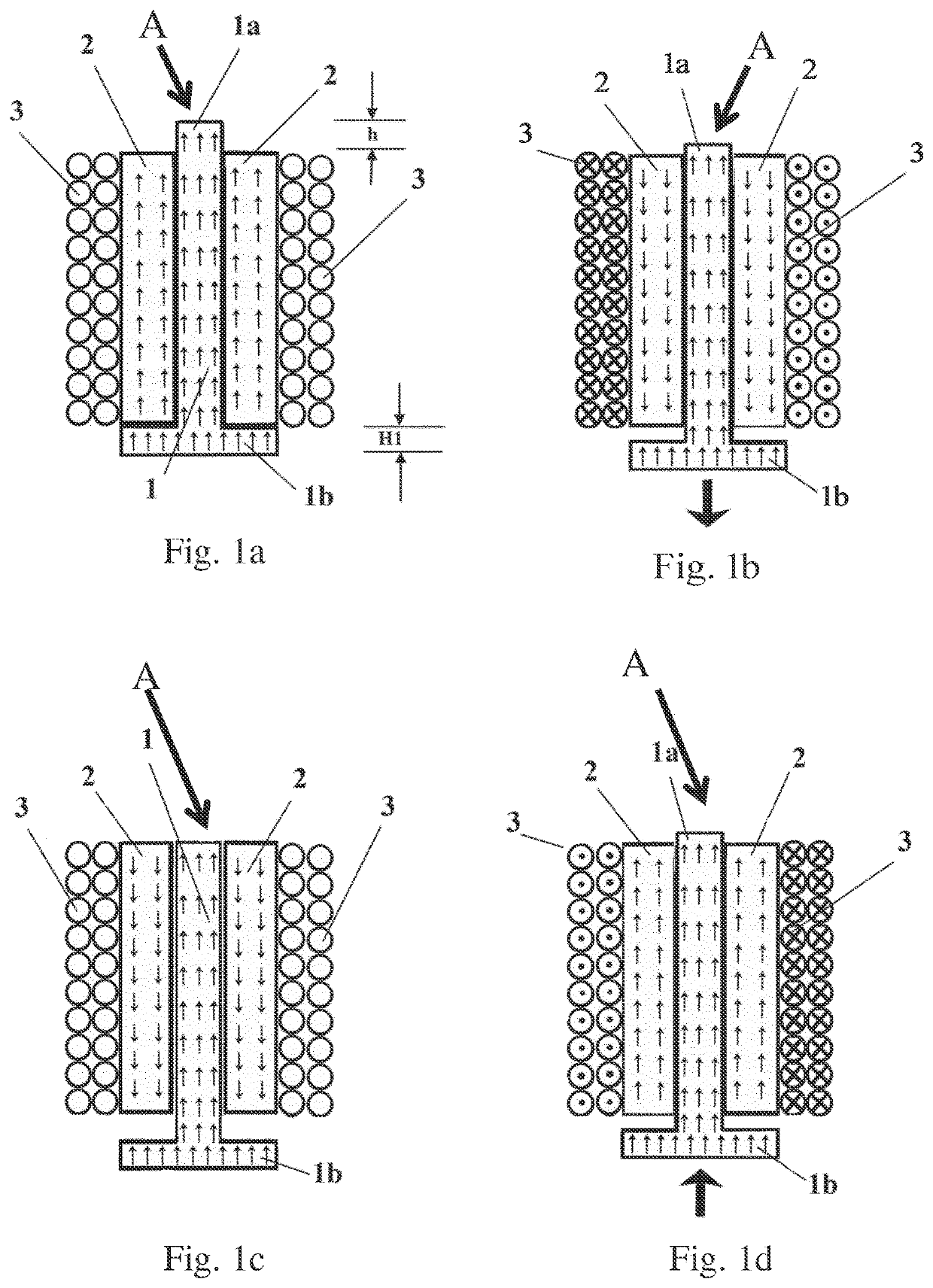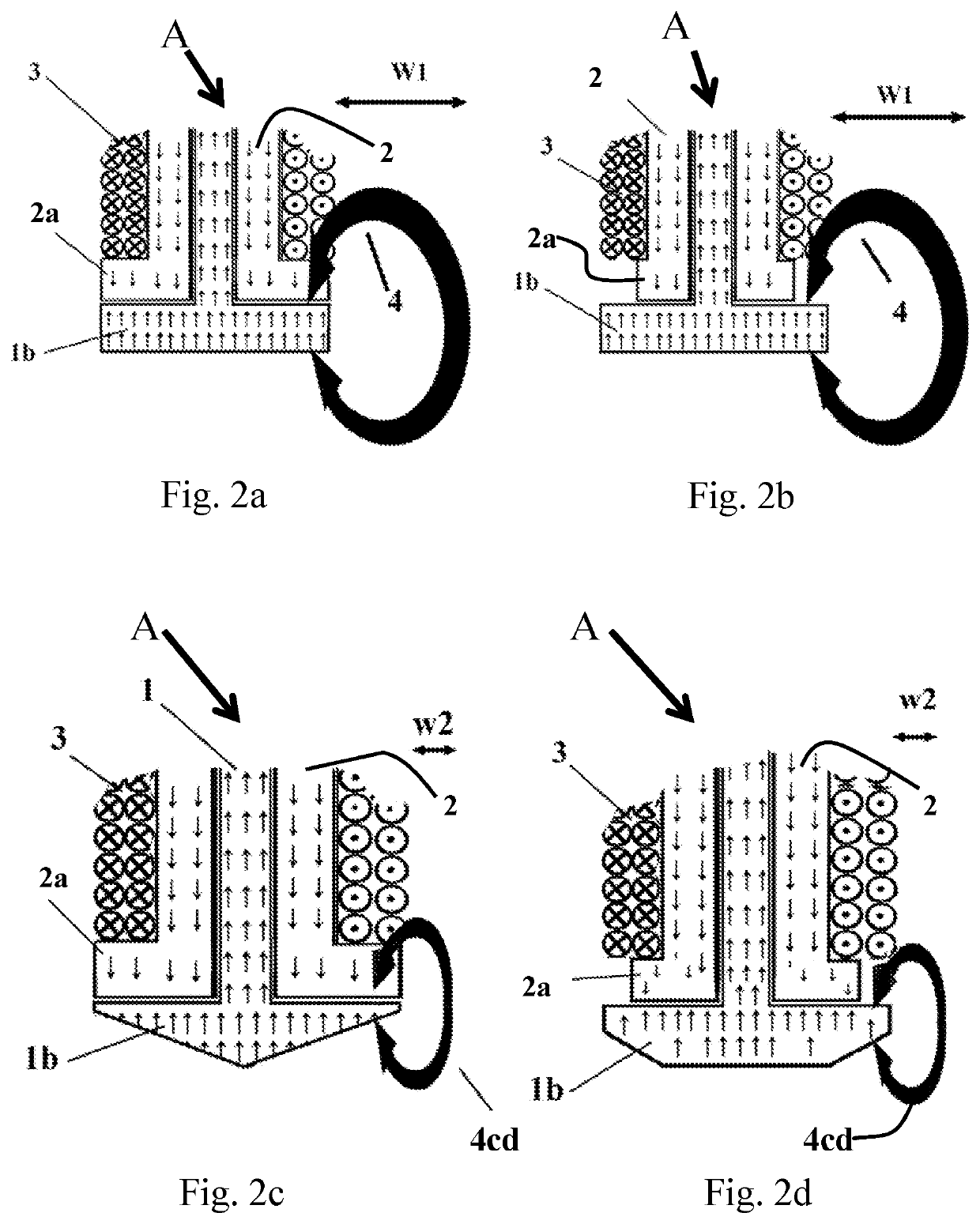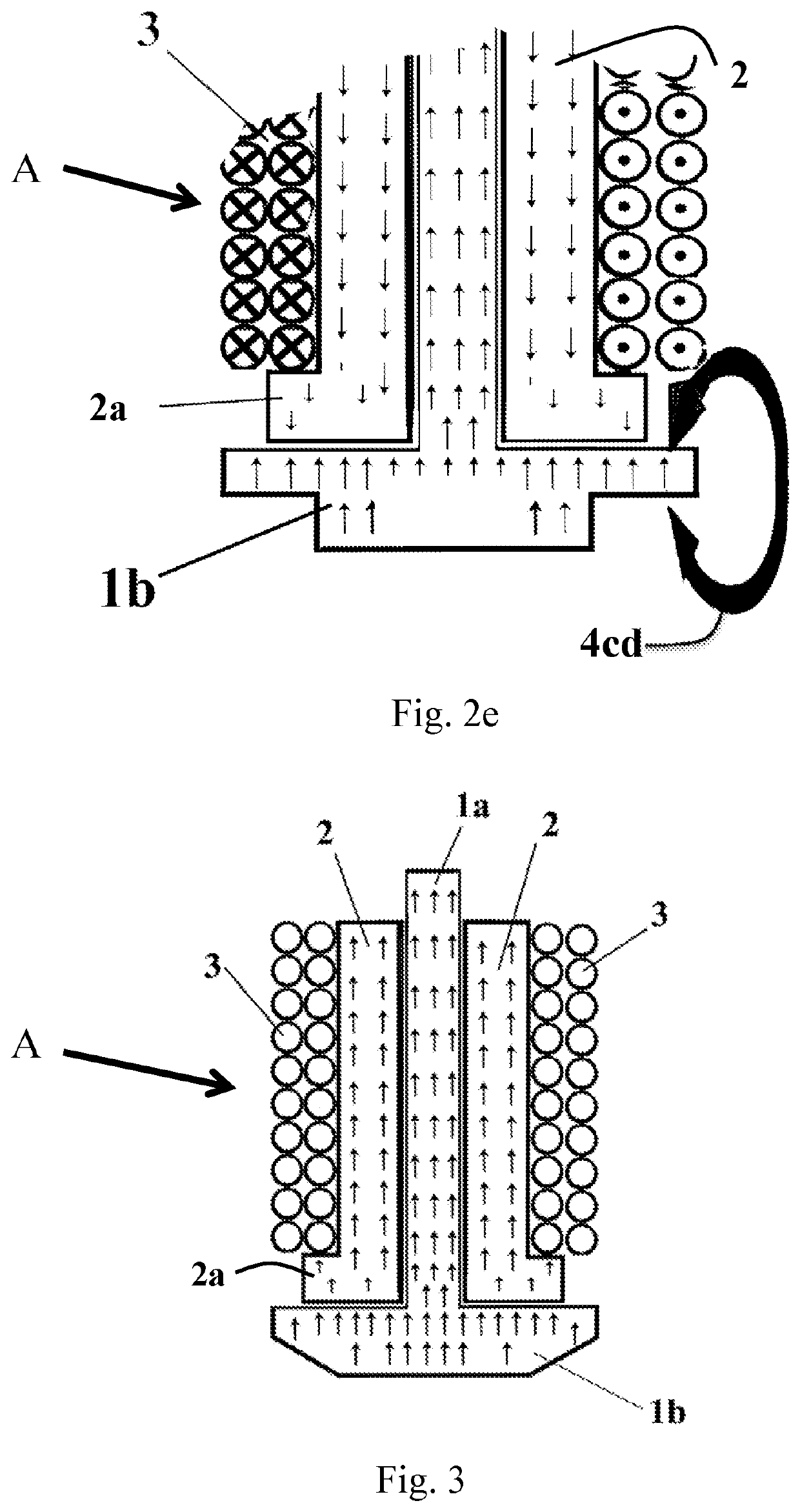The very expensive
ceramic actuators, which as a rule operate as bending elements, require additional
mechanical force deflections in order to realize a pin movement that runs perpendicular to the scanning surface at all.
The mechanical, electrical and economic disadvantages of the established piezo-modules also lead to the fact that, up to now, there is no “barrier-free” in the entire self-service area.
There may be no chance of automatic travel map machines with graphical
route representation, automatic drinks machines or money /
bank machines: the blind has no chance, these devices can be used discretely because, as a rule, no tactile output medium suitable for him is installed.
In conjunction with the required minimum forces (for example: 0.3N) for a reliable scanning operation by the feeling finger, small pin spacings are a fundamental problem, in the case of all axial
actuator types in the vicinity of the tactile pin, a sufficient amount of functional material—in this case, for example, in the case of the magnetic
actuator, in particular, a coil having a high number of wire windings—must be attached.
The simple alignment of all axial actuators of the
tactile display in a plane (parallel to the plane of the touch pins) is therefore not possible for spatial reasons.
Of course, the problem of close screening also applies to the usually electrical actuation of the actuators.
In the case of piezo solutions, this results in a considerable overall height by, for example, complicated stacking techniques of a plurality of circuit boards, which leads to this, in particular for mobile applications, the piezoelectric technology is not least attractive—not least because of safety aspects in connection with the required
high voltage (>100V) for controlling the actual bending elements.
In particular in each piezo solution it is disadvantageous that at least one stable pin position (“top” or “bottom”) can only be implemented by permanent
electrical control.
DE 103 49 100 A1 likewise offers a piezo-surface solution, but the use of additional
mechanical elements (toggle lever transmission) again the basic difficulty of ensuring a clear, clearly tactile “top” or “bottom” state of the pin.
DE 10 201 0 005 933 a1 likewise shows this problem: here, in addition to the use of a wedge gear in the resetting of the pins, it is even familiar to the force of gravity, which is subject to problems with regard to the
correctness of the
data display before the background of mobile applications.
The
assembly of the overall display is complicated and results in a construction height of the device which is not acceptable, for example, for mobile applications.
For a compact—perhaps even mobile—tactile
surface display device, the presented solution is likewise not suitable.
However, the “top” position, which is important for tactile applications, is here the least stable (lowest force of the
system) the
system immediately falls into the “down position” and, above all, a reliable representation of the data in the “off” state of the display is no longer possible.
However, these springs prevent the
system from
rapid response to control signals (opposite direction), weaken the above-holding force and additionally complicate the construction.
In order to treat the problem of forces, soft
magnetic flux conducting devices are also required, as a result of which the actuator is neither compact nor inexpensive to produce.
However, the
time response of these configurations does not satisfy the claims of rapid addressing.
As far as nowadays, there is virtually no “barrier-free”, for example, in the entire self-service area, there may be no chance to use these devices discretely because, as a rule, no reading unit suitable for him is installed.
The main source of interference is, however,
contamination which originates solely from the nature of the tactile operation during reading or during the input: fat,
skin particles, hair and sweat are introduced directly through the
human being using the display.
Dust,
moisture and provided
wetting of the display with liquid additionally cause the service to be brought about earlier or later.
The
disadvantage here is that the elevation of the feeler pins is less pronounced with respect to the display plane, that is to say reading of the tactile information is thus more cumbersome and less reliable.
In addition, it makes the structure of the unit more complicated and to think to a simple deconstruction of the individual pin—in the ideal case by the
visually impaired end user himself—, even in the case of the embodiment shown.
It is disadvantageous here that even in the event of a malfunction of only a single pin, the entire pin unit has to be removed, because the pins themselves are incorporated in their unit so that they cannot be removed, that is to say they are not easily dismantled by the
end user itself, and the purchase of the reserve pin unit naturally causes additional costs.
As a result, it is also clear that considerable expenditure for the mechanical precision (tolerance problem) of the two complex parts will be necessary.
For completely flashed people, this type of device does not, of course, represent any help.
Apart from the very limited
lateral resolution of this method, this “see with the
skin” is associated with a considerable, annual training effort.
The reliability of the method (for example the problem of electrical charges at high
air humidity) is also doubtful.
No
real image of the 3-dimensional real environment is available because of the lack of
imaging lens elements.
Despite the use of a camera /
scanner, a continuous tactile representation of an image of the environment that is closed without gaps is thus not possible.
Exactly here, the greatest
disadvantage of the TIM is: the complicated control of
zoom and section requires a large number of additional function keys, which have to be operated in a quasi-temporally parallel manner with the actual tactile “visual process”.
There are no tactile devices which are indispensable in the case of an auxiliary means for completely flashed people.
 Login to View More
Login to View More  Login to View More
Login to View More 


